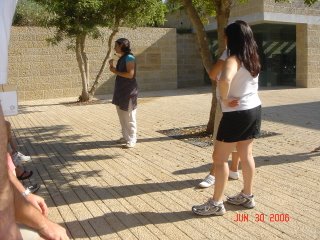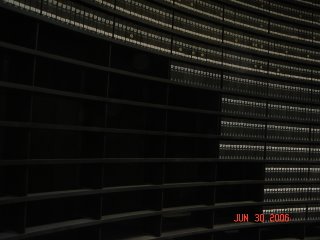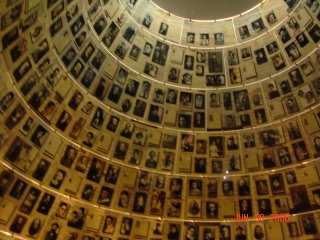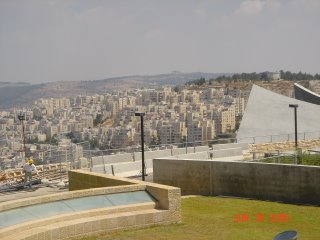Continued from Part IV
Whenever I tell someone Jewish that I lived in the Washington, D.C. area, it's just a matter of time before I hear the question, "Did you go to the Holocaust Memorial Museum?" I explain that I have, complement the museum, and then, distinguish it from the Israeli Holocaust Memorial Museum, known as Yad Va'Shem (transl. "Hand of G-d").
While I am moved by the U.S. museum---and I don't want to take anything away from it, because it's not only important, but extraordinarily well done---the museum operates from the proposition that you know little about the Holocaust and educates in exacting detail. Yad Va'Shem, however, begins with the principle that you have some knowledge of the Holocaust and moves on from there. In many ways, Yad Va'Shem is much more visceral, more raw, more internal.
However, this feeling was an eight year old memory for me, because I had never been to the renovated museum at Yad Va'Shem.
But now that I have, that feeling I had from eight years ago is even more true.
Yad Va'Shem is heart-wrenching, fascinating, emotionally exhausting, and extraordinary, all at the same time. While I could tell many stories about it, I'm going to limit myself to two.
The first is about the trees at Yad Va'Shem, which you can see in this picture.

Yad Va'Shem has a number of carob trees on the museum property. Each of these trees is dedicated to a person. Not a benefactor (at least in the traditional sense), but a "Righteous Among the Nations." This title is preserved for individuals (and one country, Denmark) that, for no personal benefit and at the risk of their own lives, save one or more Jews from the hands of the Nazis. Each tree has this Righteous person's name on a plaque in front of it.
But the reason Yad Va'Shem chose carob trees is that it takes seventy years to bear fruit. Like the carob tree (and the Talmudic stories about it), the Righteous never saw the children and grandchildren and great-grandchildren that blossomed from the people they saved. And yet, for no reason other than their own humanity, they risked their lives to save the Jewish people one at a time.
The other story is of the Hall of Names.
The Hall of Names is at the end of Yad Va'Shem. The Hall surrounds you with shelves upon shelves of books with the word Yizkor (transl. "Remember"). Contained within the books are three million names of Jews who were slaughtered by the Nazis.
However, despite the Nazis' meticulous record-keeping, and as a result of their widespread desire to annihilate the Jews, many entire families were simply wiped out. There's simply no record of those lost families, no one to tell their names to Yad Va'Shem.
So while the Hall of Names has over three million people memorialized in its volumes, it has many empty shelves. Those shelves serve as a perpetual memorial for those three million Jews whose names will never be known.
As you can see, even a picture of some of those empty shelves tells more than anything I can write here.

And the collage of pictures above reminds you, that these aren't just names, but people.

Each name was a life. A mother, a father, a child, a grandparent, a grandchild. A person with hopes, dreams, aspirations. A person whose future was snuffed out with less care than a candle. And, ultimately, for no reasons other than hate and apathy.
While the Holocaust is and will always remain an indelible and profound part of my Jewish identity, the lessons are far more universal. One lesson is still inscribed at Yad Va'Shem and is attributed to Pastor Martin Niemeller:
When the Nazis came for the communists, I remained silent; I was not a communist.
When they locked up the social democrats, I remained silent; I was not a social democrat.
When they came for the trade unionists, I did not speak out; I was not a trade unionist.
When they came for the Jews, I did not speak out; I was not a Jew.When they came for me, there was no one left to speak out.
This is Jackie Hendeli, a Greek Jew from Saloniki and Holocaust survivor, whose incredible story included nine days in an overstuffed cattle car with no water on his way to Auschwitz, the indescribable torture ofAuschwitz, and the Nazi death marches at the end of the war, I simply could never do justice...

My favorite sculpture; a woman whose children are holding on to her, but have been cut out of her body... More artwork from Yad Va'Shem...
More artwork from Yad Va'Shem...



And the reminder of eternal hope that the view of Jerusalem inspires upon leaving...




No comments:
Post a Comment